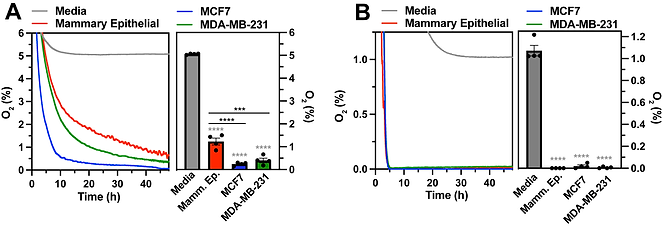Oxygen tension plays a key role in organic tissue function. When studied in controlled environments, it can reveal useful insights about human physiology and pathophysiology.
Mammalian cell culture research is a commonly used proxy method for studying conditions in the human body. Last year, a group of scientists from the Northeastern University in Boston, MA came up with a new method of measuring oxygen tension in oxygen controlled mammalian cell culture environments.

Having assumed that the gas phase oxygen concentration equals the pericellular oxygen concentration, they used special oxygen controlled incubators along with the cell culture wells where PyroScience sensor spots were installed (see Fig. 1). In their experiment, they examined the relationship between gas phase and pericellular oxygen tensions in standard physioxic (5% O2) and hypoxic (1% O2) cultures.

As a result of this study, the researchers discovered that pericellular oxygen tensions are far below incubator setpoints in both standard physioxic and hypixoc cell culture protocols. They concluded that in order to accurately control for oxygen in cell cultures, it is highly recommended to measure pericellular oxygen tension.
For more information about this research along with its methods and conclusions, see here.
